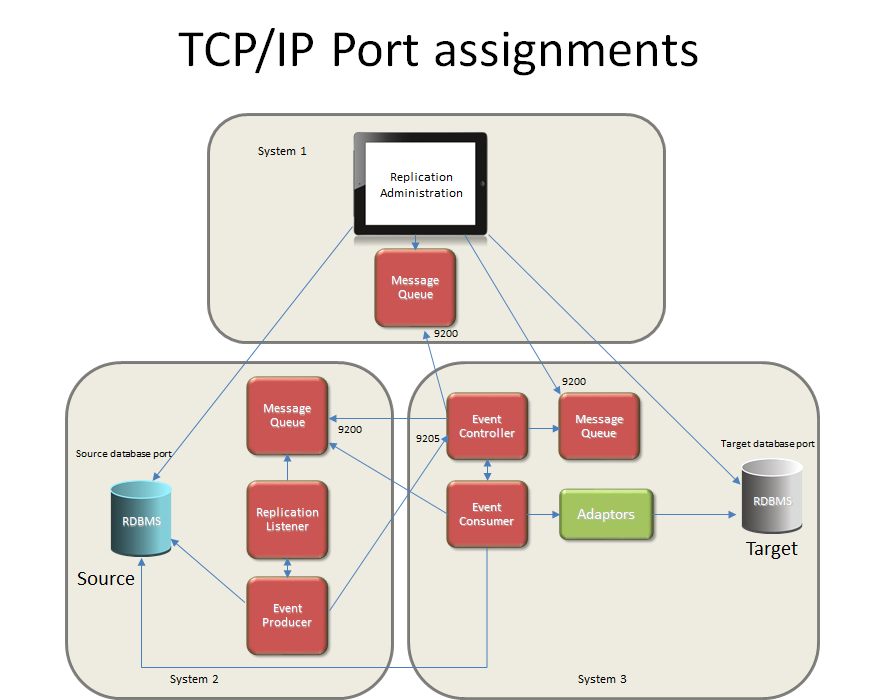The following is a list of replication components that use TCP/IP communications and the default ports they use:
|
Component Name |
Default Port |
|---|---|
|
CONNX Message Queue |
9200 |
|
CONNX Replication Controller |
9205 |
|
CONNX Data Server (optional depending on target database) |
6500 |
|
License Server |
7501 |
If CONNX is installed in an environment where a firewall is present, these ports need to be opened.
Because replication is designed to work in a distributed environment, it is likely that components will be installed on different machines. If there is a firewall in between the machines where the different components are installed, the ports for the components need to be open in the firewall.
The following describes each port and when it needs to be open:
Port 9200: This port is used by the CONNX Message Queue and must be open and allowed to accept connections from all machines where replication components are installed. This includes the Replication Administration machine, the EP machine, and the Event Server (controller) machine.
Port 9205: This port is used by the controller to accept connections from the EP. If the EP is on a different machine than the controller, port 9205 on the controller machine must be open and allowed to accept connections from the EP machine. Note, if there are multiple EP machines in the configuration, then port 9205 needs to be able to accept connections from each EP machine.
Port 6500: This port is used by the CONNX listener (data server). While the data server is not a replication component, it may be used by replication depending on the particular configuration.
Port 7501: This port is used by the license server and must be open and allowed to accept connections from any machine where CONNX components are installed. This includes the EP, Controller, Replication Administrator, and any other CONNX clients running in the environment.
The diagram below illustrates a typical configuration with the Replication Administrator installed on System 1, the source database along with the EP installed on System 2 and the Controller along with the target database installed on System 3:

In this example:
System 1
must open port 9200 and allow connections from System 3
from any source port, it must be able to connect to System 2 on the source database port.
from any source port, it must be able to connect to System 3 on port 9200 and the target database port
System 2
must open port 9200 and allow connections from System 3
must open the source database port and allow connections from System 1 and System 3
from any source port, it must be able to connect to System 3 on port 9205
System 3
must open port 9200 and allow connections from System 1
must open the target database port and allow connections from System 1
must open port 9205 and allow connections from System 2
from any source port, it must be able to connect to System 1 on port 9200
from any source port, it must be able to connect to System 2 on the source database port and port 9200
All Systems
from any source port, they must be able to connect to the License Server (not depicted in the above diagram) on port 7501
License Server (not depicted in the above diagram)
must open port 7501 and accept connections from any system where CONNX components are installed.
Note: This example depicts the target database on the same system as the Event Controller (System 3). If the target database is on a different system, the appropriate ports will need to be open on that system.
Note: This example depicts the Replication Listener and Event Producer
on the same system as the source database. If the source database
is another system, the appropriate ports will need to be open on that
system.